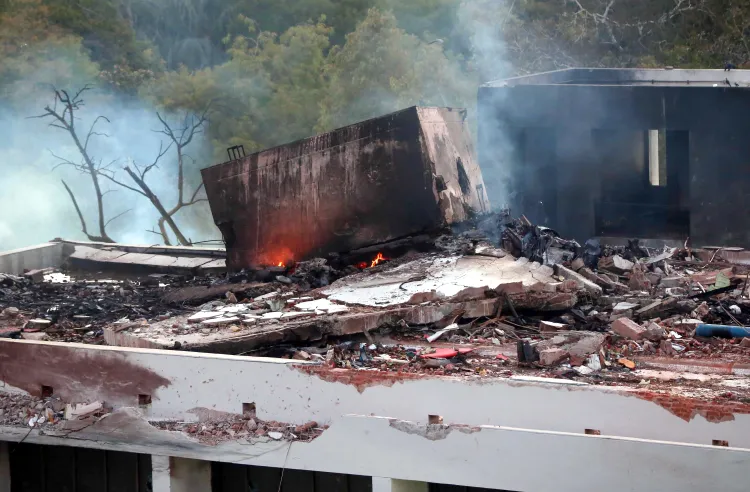Why Would a Pilot Fool Around with Cockpit Switches During Takeoff?

Synopsis
Key Takeaways
- The pilot's focus during takeoff is crucial.
- Mark Martin emphasizes the improbability of pilots tampering with switches.
- The AAIB report highlights potential issues with fuel control switches.
- The crash had devastating consequences for passengers and crew.
- Further investigations are needed for a complete understanding.
New Delhi, July 12 (NationPress) No pilot is foolish, or incompetent, to engage with switches in the cockpit when their focus is directed at the forward flight instruments during takeoff and landing, stated leading aviation authority Mark Martin in an interview with IANS on Saturday.
In response to the preliminary findings from the Aircraft Accident Investigation Bureau (AAIB) regarding the tragic crash of Air India flight AI 171 — a Boeing 787-8 Dreamliner that tragically went down shortly after taking off from Ahmedabad on June 12, Martin, who serves as CEO of Martin Consulting, an aviation safety firm based in Asia, emphasized that the two most crucial phases of flight for a pilot are takeoff and landing.
“At these moments, every ounce of attention is directed towards the flight instruments and manually controlling the aircraft until it reaches approximately 2000 feet, at which point the autopilot is engaged. Focus is entirely on flight dynamics and controls, never on the throttle quadrant, as thrust is typically set to MAX TAKEOFF THRUST,” he remarked to IANS.
The AAIB's preliminary report revealed that both fuel control switches, which supply fuel to the engines of Air India flight 171, were turned off in rapid succession, leading to the shutdown of both engines.
In the cockpit voice recorder, one pilot can be heard questioning the other about why he cut off the fuel, to which the other pilot replied that “he did not,” as noted in the report.
Martin indicated that the findings “will have global implications for all 787 operators.”
“It is extremely improbable that any pilot, particularly during takeoff, would want to tamper with switches located behind the thrust levers. At most, a pilot would focus on raising the landing gear, positioned on the front panel of the cockpit, or adjusting the flaps,” the expert elaborated, urging that we await the full and comprehensive investigation report.
The report confirmed that both pilots had sufficient rest before the flight. Spanning 15 pages, the report outlined that the flight lasted approximately 30 seconds from lift-off to crash. At this point, it noted that there are no recommended actions for operators of Boeing 787-8 aircraft and GE GEnx-1B engines.
The air disaster resulted in the loss of 260 lives — 241 out of the 242 individuals aboard the ill-fated aircraft and 19 on the ground.









